Bali Seaweed Farm Lembongan
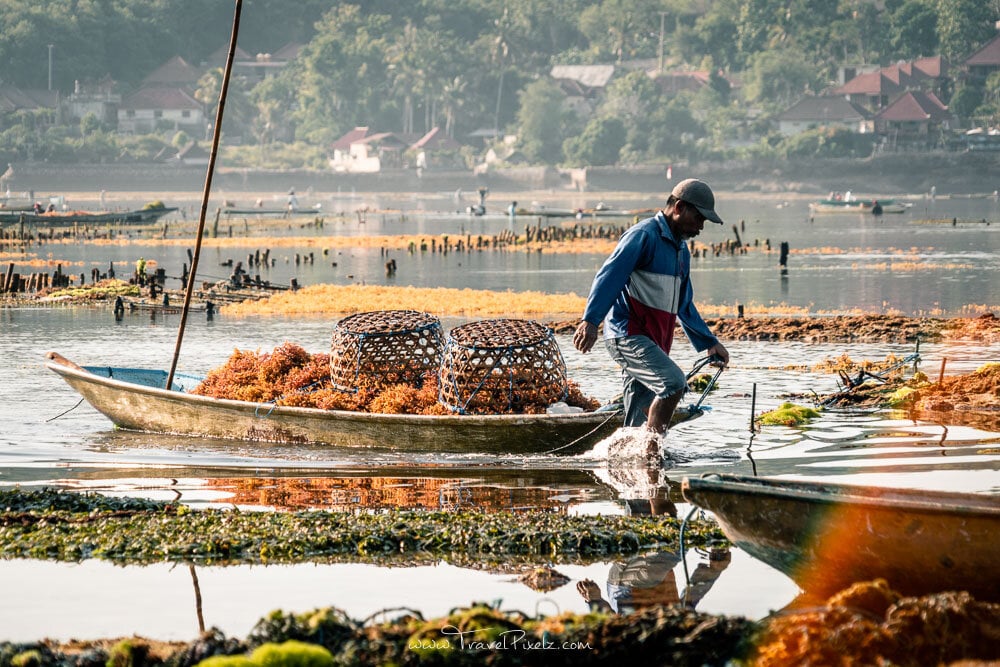
Bali Seaweed Farm Lembongan. Bali is known for its beautiful landscapes, rich culture, and tourism attractions, but beneath the waves lies a fascinating world of sustainable farming. Seaweed farming, especially on Nusa Lembongan, has become an integral part of the local economy and culture. The island’s seaweed farms are an example of how Bali’s relationship with the ocean extends far beyond tourism, providing not only livelihoods but also an ecological balance. This article delves into the world of Bali Seaweed Farm Lembongan, with insights into its location, history, planting process, and much more.
1. Bali Seaweed Farm Lembongan Location
Nusa Lembongan is a small island located southeast of Bali. It’s part of the Nusa Penida District and is renowned for its crystal-clear waters, coral reefs, and seaweed farms. The Bali Seaweed Farm in Lembongan is situated along the coastal areas, especially in shallow waters around the island where conditions are ideal for seaweed cultivation. Many farms can be spotted along Jungut Batu Beach, where the vibrant green hues of the seaweed patches contrast beautifully with the surrounding blue waters.
The island itself is just a short boat ride from Sanur, making it easily accessible for tourists interested in exploring this unique aspect of Bali’s marine culture. Due to its proximity to popular tourist destinations, visitors to Nusa Lembongan can witness the local farmers hard at work tending to their seaweed, providing an authentic experience of the island’s daily life.
2. Bali Seaweed Farm Lembongan History
Seaweed farming in Bali dates back several decades, with the industry growing significantly in the 1980s. Initially, it was introduced to provide alternative income sources to local fishermen. At the time, traditional fishing was becoming less viable due to overfishing, and the cultivation of seaweed presented a sustainable solution.
Lembongan became a key location for seaweed farming due to its ideal marine environment. The island’s calm, shallow waters, abundant sunlight, and the right temperature create perfect conditions for growing seaweed, specifically Eucheuma Cottonii—a species of seaweed that thrives in tropical waters. Over time, seaweed farming became a major economic driver for the island, and many families switched from fishing to seaweed cultivation as their primary source of income.
3. Eucheuma Cottonii in Bali Seaweed Farm Lembongan
Eucheuma Cottonii, one of the most cultivated species of seaweed in Nusa Lembongan, is prized for its carrageenan—a gelatinous substance used in a variety of industries, including food, cosmetics, and pharmaceuticals. This red algae species is in high demand globally and is a key product of Lembongan’s seaweed farms.
In addition to its economic value, Eucheuma Cottonii plays an essential role in the marine ecosystem. It helps filter seawater, providing a cleaner environment for marine life. The cultivation of this seaweed also supports the growth of healthy coral reefs and mitigates erosion along the coastline.
Lembongan’s farmers are experts in growing and harvesting Eucheuma Cottonii. The entire process, from planting to harvesting, follows traditional methods that have been passed down through generations, ensuring that the farming process remains sustainable and environmentally friendly.
4. Bali Seaweed Farm Lembongan Planting Process
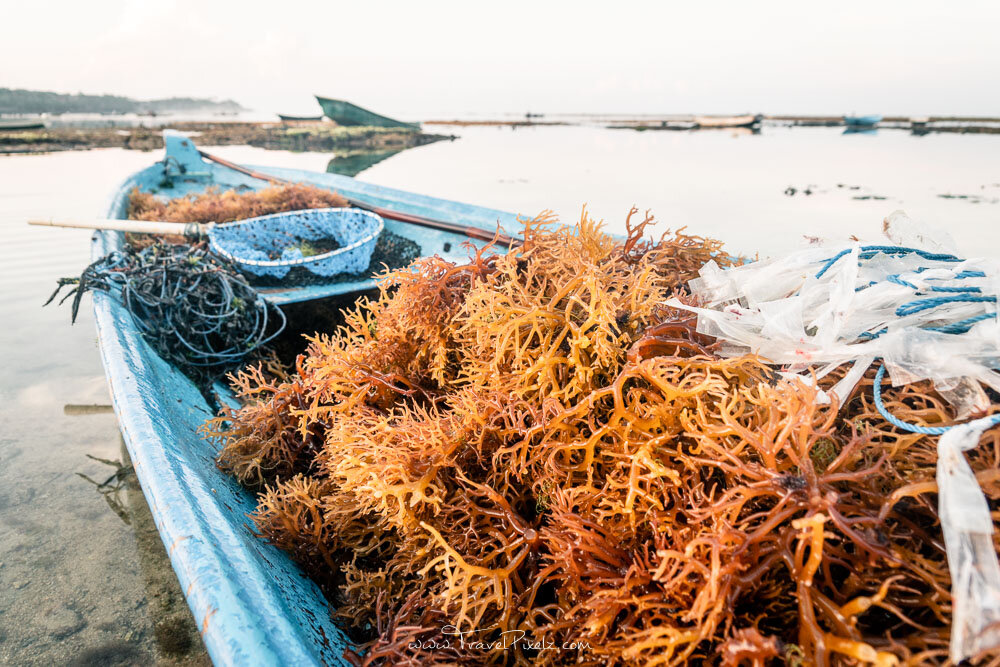
The seaweed farming process on Nusa Lembongan is a fascinating combination of traditional methods and sustainable practices. It typically involves several stages:
- Selection of Seaweed: Farmers begin by selecting healthy strains of Eucheuma Cottonii. These strains are carefully chosen to ensure robust growth in the island’s tropical waters.
- Tying and Planting: The seaweed is then tied to ropes or stakes that are submerged in shallow waters. These ropes are spaced out to allow the seaweed enough room to grow while still maintaining accessibility for farmers to tend the crops.
- Maintenance: Throughout the growing process, farmers regularly check on the seaweed to ensure it remains healthy. They monitor the water quality, remove any unwanted debris, and ensure the seaweed is not being affected by marine life.
- Harvesting: After around 6-8 weeks, the seaweed reaches maturity and is ready to be harvested. Farmers typically use small boats to gather the seaweed from the ropes before bringing it back to the shore to be dried.
- Drying and Processing: Once harvested, the seaweed is spread out in the sun to dry. This drying process can take several days, depending on the weather. Once dried, the seaweed is ready for sale, either locally or to international markets.
5. What You Can See at Bali Seaweed Farm Lembongan
Visiting Bali Seaweed Farm Lembongan is a unique experience. You will see vast stretches of seaweed farms in shallow waters, and the sight of farmers tending to their crops against the backdrop of Nusa Lembongan’s beautiful beaches is picturesque. The farms are located in areas where the water is calm, and you can observe how seaweed is cultivated, harvested, and dried on the shore.
In addition to the seaweed farms themselves, Nusa Lembongan offers visitors a chance to explore the island’s coral reefs and enjoy the marine life that thrives in the nutrient-rich waters. It is a perfect location for eco-tourists and those interested in sustainable farming practices.
6. How to Get to Bali Seaweed Farm Lembongan
Getting to Bali Seaweed Farm Lembongan is easy, with several transportation options available:
- By Boat from Bali: The most common way to reach Nusa Lembongan is by boat from Sanur. Fast boats operate daily and take around 30 minutes to reach the island. Once you arrive at the main harbor in Jungut Batu, the seaweed farms are easily accessible by foot or scooter.
- Private Tours: Many tour operators offer day trips to Nusa Lembongan, which include visits to the seaweed farms, as well as other attractions like Dream Beach, Devil’s Tear, and Mangrove Forest.
- Scooter Rentals: Once on the island, renting a scooter is a popular way to explore and visit the seaweed farms, which are spread across the coast.
7. Photo Spot at Gembleng Waterfall
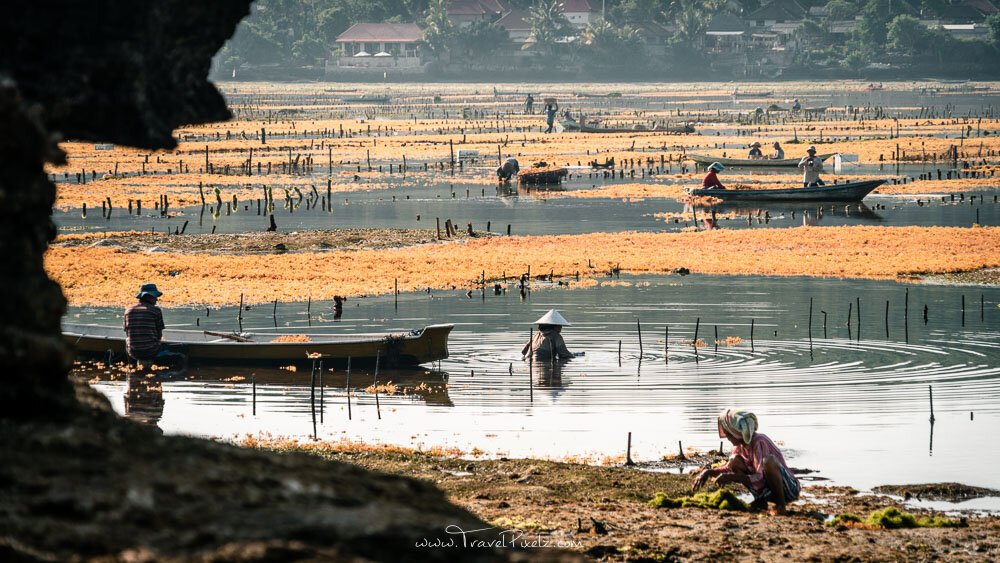
While exploring Bali’s rich culture and landscapes, be sure to visit Gembleng Waterfall on your way back from Nusa Lembongan. Though not directly related to the seaweed farms, this natural attraction provides a refreshing break from the island’s coastline. Situated near Sidemen Village, Gembleng Waterfall is a hidden gem surrounded by lush tropical forests. The waterfall features a natural pool at its base, perfect for a dip after a day of exploring the seaweed farms.
The waterfall is known for its scenic beauty, making it a perfect spot for photography. The cascading water, framed by greenery, creates a postcard-perfect scene, while the view from the top of the waterfall offers a panoramic look at the surrounding rice terraces and valleys.
Conclusion
Bali Seaweed Farm Lembongan represents a deep connection between the island’s people and the ocean. The seaweed farming tradition not only provides economic support but also helps to preserve the marine ecosystem. By visiting these farms, travelers can gain insight into the daily lives of Balinese seaweed farmers and appreciate the sustainable practices that contribute to both the local economy and the health of the environment. Whether you are a curious tourist or an eco-conscious traveler, the seaweed farms of Nusa Lembongan offer an unforgettable glimpse into Bali’s unique culture.


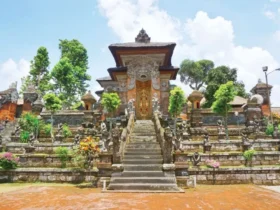
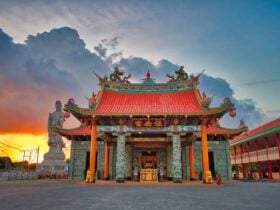
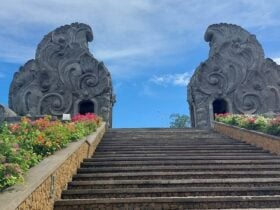
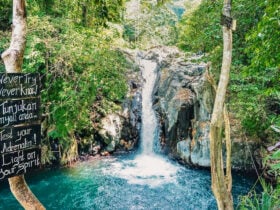
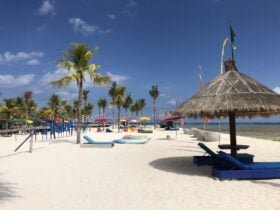
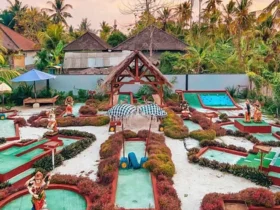
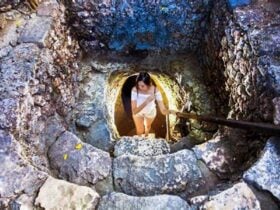
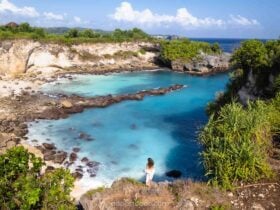
Leave a Review